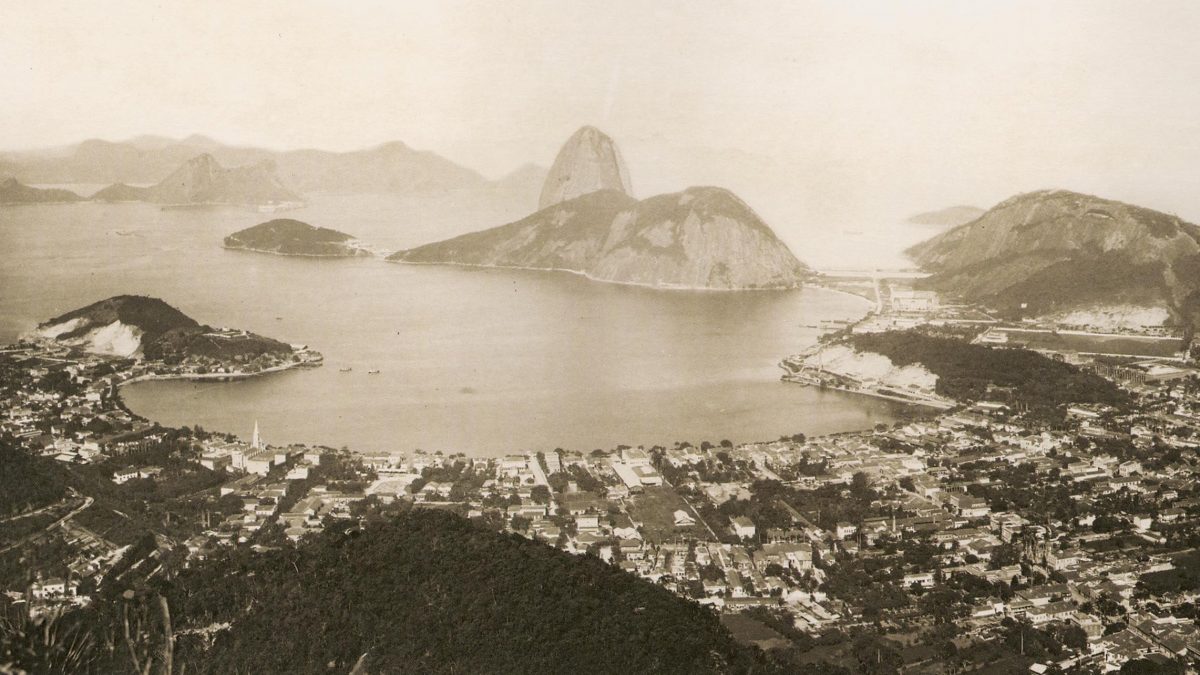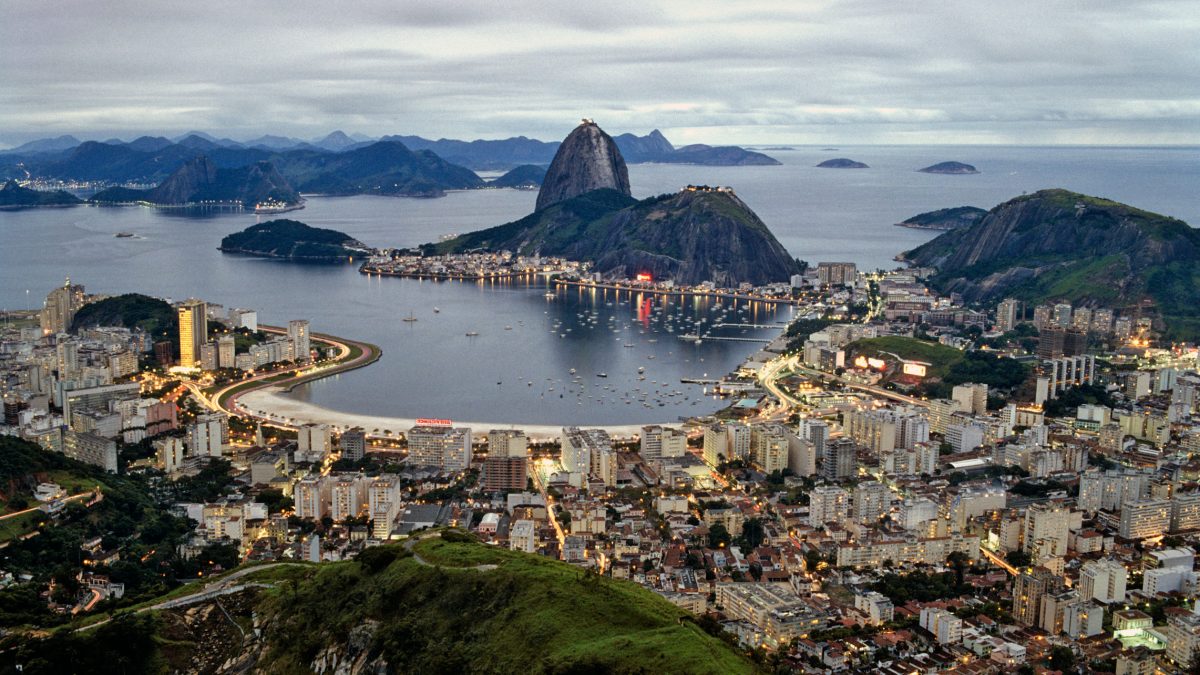Old Coast, New Coast: Rio de Janeiro
Botafogo Bay, a cornerstone of Rio since early colonial days, still looks lovely on the surface. The lead up to the 2016 Summer Olympics, however, has revealed a thoroughly modern Brazilian beach.
Article body copy
Rio de Janeiro’s Botafogo Bay, pictured here in 1889, was a collection of fishermen’s huts and a few farms for its first two centuries as part of the Portuguese empire. Then Napoleon invaded Portugal in 1807, forcing Prince Regent João into exile.
The monarch left Lisbon—with an entourage of over 10,000 loyal court members—for Rio, which soon became the empire’s de facto capital. The newcomers spread out and development quickly hit the Botafogo neighborhood and coastline, says Lise Sedrez, a history professor at the Federal University of Rio de Janeiro. Early paintings of the area show that the wealthy and the middle class built country homes in Botafogo. By mid-century, Cariocas (residents of Rio) had transformed these idyllic getaways into luxurious mansions. Beach culture was decades away, but Sedrez says Cariocas visited Botafogo Bay to relax, taking advantage of the scenic coast and the lack of mangroves, which blocked access to other nearby shores.
While this 1889 photograph shows a kind of seafront breaker that was built in the 1870s, Sedrez notes that when the Portuguese court hit town earlier in the century, the bay had a beach. That sandy shoreline was restored once the beach craze took off in the 1920s and a tan became a sign of leisure.
1889: Most colonists who settled in Botafogo Bay were part of a wave of Portuguese expatriates who fled Napoleon’s advancing armies in 1807.
2008: Botafogo Bay is still a pretty beachside neighborhood and home to mostly upper middle class Cariocas. Swimming, however, is a hazardous undertaking. Photo by imageBROKER/Alamy Stock Photo
As the area developed, pollution levels grew, mostly due to a pipe that pumped raw sewage into the bay. Strong oceanic currents bypass Botafogo Bay for the most part, so sewage tends to stick around. Reports from 1918 describe the water in some spots as having a “fecaloid” smell and taste, Sedrez says. Today, the water off Botafogo Bay remains as polluted as ever, drawing concern from scientists as athletes and tourists prepare to descend on the beach. Of five beaches tested around Rio, Botafogo Bay has the highest count of drug-resistant super bacteria in its water.
Decades ago, the pollution didn’t stop one woman from diving in—Maria Lenk, a Brazilian athletic icon. Lenk was a world record holder in swimming and a competitor in the 1936 Summer Olympics in Berlin. The aquatics center for the Rio Olympics bears her name. Lenk, who died at age 92 in 2007, famously swam from one end of Botafogo Bay to the other every day from the 1930s to the 1970s. She continued swimming—in pools—until the day she died.



